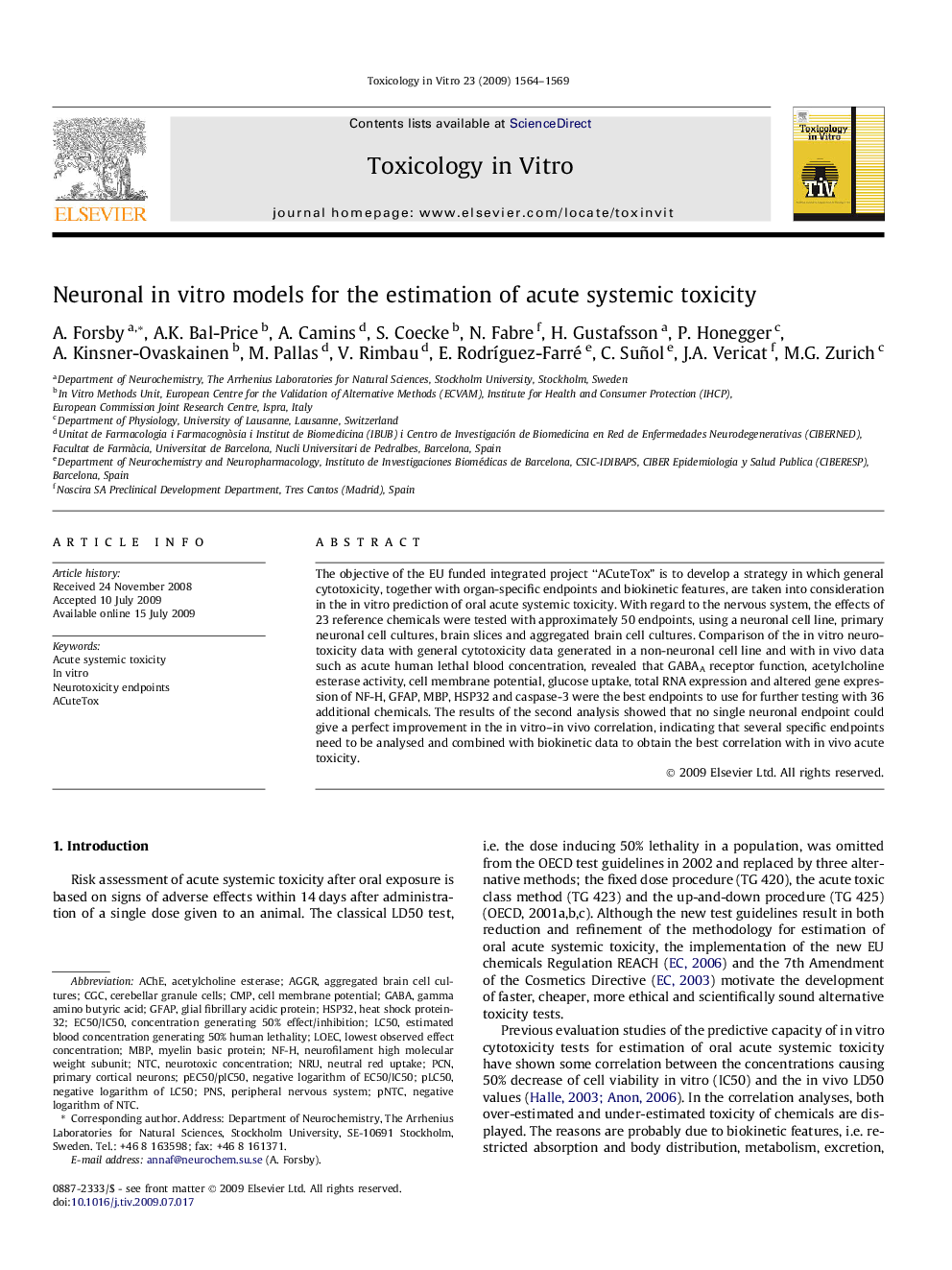| Article ID | Journal | Published Year | Pages | File Type |
|---|---|---|---|---|
| 2602650 | Toxicology in Vitro | 2009 | 6 Pages |
The objective of the EU funded integrated project “ACuteTox” is to develop a strategy in which general cytotoxicity, together with organ-specific endpoints and biokinetic features, are taken into consideration in the in vitro prediction of oral acute systemic toxicity. With regard to the nervous system, the effects of 23 reference chemicals were tested with approximately 50 endpoints, using a neuronal cell line, primary neuronal cell cultures, brain slices and aggregated brain cell cultures. Comparison of the in vitro neurotoxicity data with general cytotoxicity data generated in a non-neuronal cell line and with in vivo data such as acute human lethal blood concentration, revealed that GABAA receptor function, acetylcholine esterase activity, cell membrane potential, glucose uptake, total RNA expression and altered gene expression of NF-H, GFAP, MBP, HSP32 and caspase-3 were the best endpoints to use for further testing with 36 additional chemicals. The results of the second analysis showed that no single neuronal endpoint could give a perfect improvement in the in vitro–in vivo correlation, indicating that several specific endpoints need to be analysed and combined with biokinetic data to obtain the best correlation with in vivo acute toxicity.
